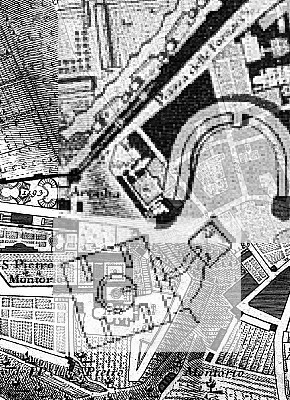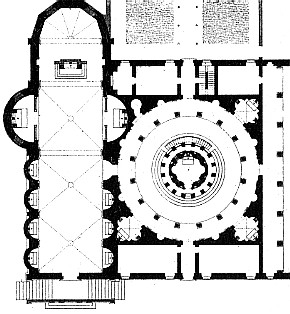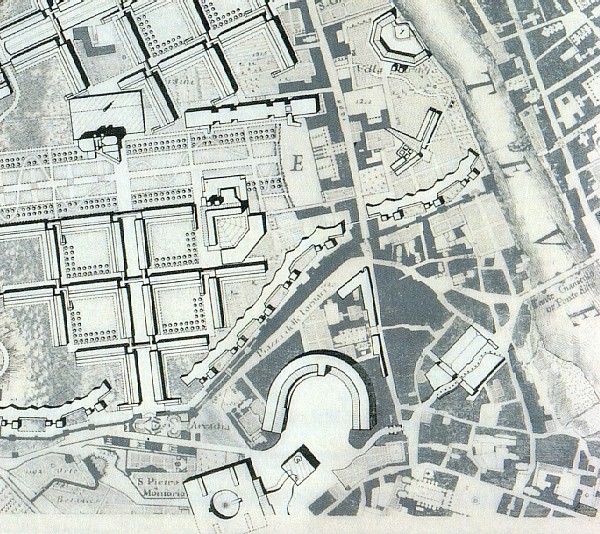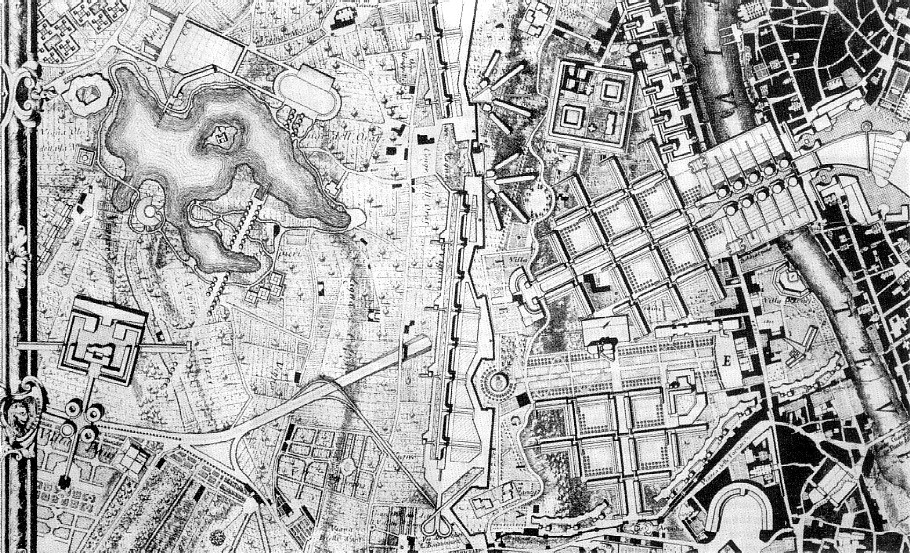2011.01.11
The new Museum of Architecture contains...


The unbuilt setting around the Tempietto, as intended by Bramante.
| |

"Continuing further into Trastevere one reaches a new piazza (Derby Town Center, project, 1970). The edges of medieval urbanism are here reordered to define a central space and the focusing element is the Entrance Pavilion to a new Museum (Düsseldorf Kunstgalerie, project, 1975). The new piazza, with its shopping arcade and civic accommodation, represents a secular alternative to the Piazza Sta. Maria in Trastevere, the religious centre of the area for many centuries.
The new Museum of Architecture contains, as its main feature, Bramante's Tempietto. This may be seen in the circular garden of the museum in a setting similar to the one originally intended by Bramante. Serlio describes the unbuilt setting around the Tempietto, as intended by Bramante, to be 'a concentric circular colonnade incorporated into the interior of the present courtyard.' The relationship of the two concentric circular elements--Tempietto and courtyard--is the expression of Renaissance religious symbolism. A public pedestrian walkway connects from the entrance pavilion through this circular garden and up into the famous Fontana Paolina. Not far from the museum are the Steps of the Arcadians, the quarters of a group of poets who aimed to 'return poetry to the purity of classical traditions.'"
James Stirling, Roma Interrotta: Sector IV (1978).
3120e
|
| |
2011.01.12

In many ways, Le Corbusier's International Planning Competition for Berlin precurses Stirling's contribution to Roma Interrotta. The Berlin plan manifests a distribution of many of Le Corbusier's previous buildings and designs, both built and unbuilt, and, moreover, the placements throughout the plan appear to be done with "contextual, associational, prototypical, typological, symbological and iconographical considerations."
2011.01.13 14:16
"On Criticism" an aggregate thread
Regarding 'illuminating how the creative mind operates' see Quondam's three latest pages:
Architectural Visions of Early Fancy and Dreams in the Evening of Life
Roma Interrotta: Sector IV / Urban Components
International Planning Competition for Berlin
These pages are not so much critical but more curatorial. The overall implication, however, is that Stirling's creative working for his Roma Interrotta design involved a process of seeking precedents and then finding inspiration.
217i 3120l
2011.11.19 13:25
Quondam's Fifteenth Anniversary
Most recently, it's too bad Vidler doesn't include Le Corbusier's International Planning Competition for Berlin in his analysis of Stirling's Roma Interrotta.
[Incidentally, every instance of Le Corbusier's Museum for Unlimited Growth is listed within Colomina's "The Endless Museum: Le Corbusier and Mies van der Rohe" (Log 15) except for the last instance, which is within the International Planning Competition for Berlin.]
c1119
|